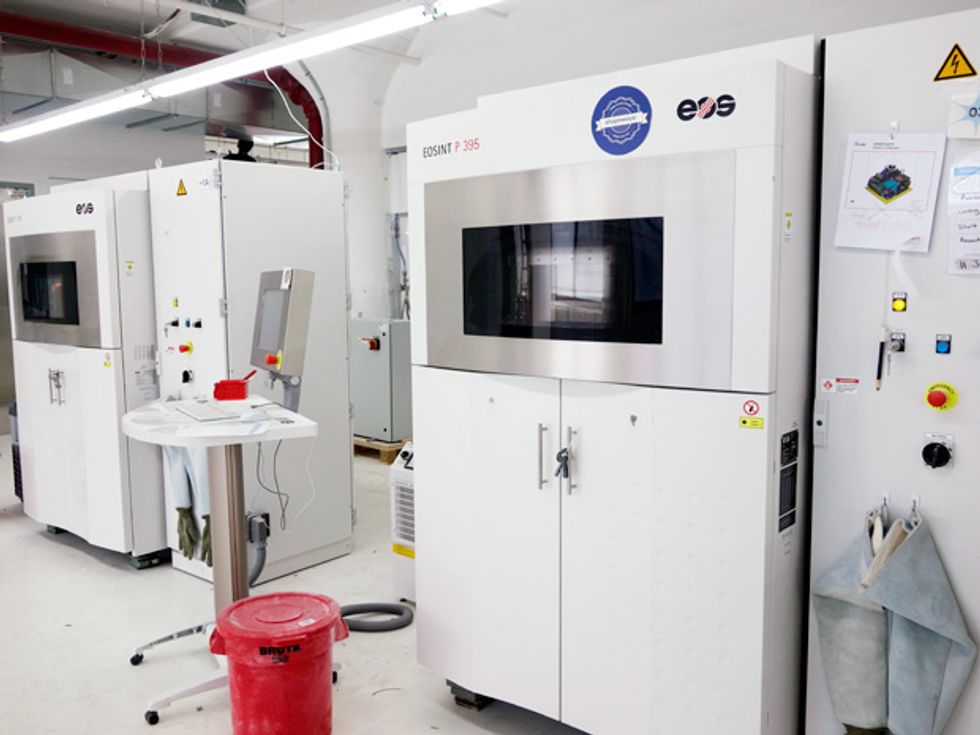
Being in the 3‑D printing business brings some conveniences—like fewer trips to the hardware store. “If we need an adapter for a vacuum hose, we don’t buy it,” says Ben Wilkinson-Raemer, an industrial engineer with the start-up Shapeways. “We print it.”
Instead of selling 3‑D printers, which typically cost upwards of US $1000, Shapeways sells printing services to designers and DIY makers. Customers first upload their designs to the company’s website, and then Shapeways, which originated as a spin-off of the Dutch electronics behemoth Royal Philips in 2008, takes care of the fabrication and ships out the printed objects. Most are fabricated in lightweight plastics, but several metals and ceramics are available; objects can be as large as a night table.
To print an object, you first need a 3‑D model, and many potential customers aren’t familiar with modeling programs. To overcome that barrier, Shapeways has strategies for simplifying the design process: It offers online tutorials, provides apps that make it easy to create objects like smartphone cases or cookie cutters, and hosts a forum where customers can find and hire 3‑D modelers.
Roughly 300 000 people have used the Shapeways site either to make or buy a 3‑D doodad. “Our customers range from hard-core model-maker engineer types to suburban housewives,” says Wilkinson-Raemer. About 11 000 of those customers have opened shops on the Shapeways site to sell their creations.
Shapeways
Founded: 2008
Headquarters: New York City
Founders: Robert Schouwenburg, Marleen Vogelaar, Peter Weijmarshausen
Funding: Recently raised $30 million in venture capital
Employees: 90+
Website: https://www.shapeways.com
Shapeways’ headquarters are in New York City, where the company has nearly completed a full-scale production and distribution facility in a warehouse district. Ten machines were running when IEEE Spectrum’s reporter visited the factory, but it could host as many as 50 printers by the time it’s fully built out in January 2014.
Despite the high expense of real estate in New York, Shapeways decided to build a manufacturing plant there because the location guarantees proximity to people that the company values: customers and software developers. The city’s throngs of designers and artists are all potential customers, Wilkinson-Raemer says, and the company wants to make it possible for dedicated makers to visit the factory to get a better understanding of the printers’ potential. New York also has an excellent talent pool for software developers—important for a company that expects to hire more than 50 people this year, he notes.
Software is crucial to Shapeways’ manufacturing process. Printing one object at a time would be impossibly slow and expensive, Wilkinson-Raemer explains. Instead, in the preproduction phase, software arranges a 3‑D “puzzle” of objects that can be printed in a single run. Prices for printing vary according to size and material, but producing a plastic napkin ring, for example, formed from the letters of a custom message, will cost a customer about $9.

Michael Wolf, founder and chief analyst of the high-tech research firm NextMarket Insights, in Edmonds, Wash., thinks that Shapeways is well positioned for success. “People are fascinated by 3‑D printing, but a 3‑D printer is still out of reach for the average consumer,” he says. The price of printers may be coming down, but Wolf says that printing services are what consumers will find affordable for at least the next five years.
Wolf credits Shapeways with expanding its market by harnessing the creativity of app developers. “They have simple apps that access this really complex printing capability,” he says, citing an app called Mixee Me that guides customers in creating plastic dolls. Says Wolf: “Even my 8-year-old daughter can design a little version of herself and print out a figurine.”
But all these clever tactics may not be enough to keep Shapeways in business if a deep-pocketed e-commerce company decides to enter the fray. Wolf expects serious competitors to emerge in the next year or two, naming Amazon.com as one potential rival. In proving the viability of the 3‑D printing market, Wolf says, Shapeways may end up encouraging other players to jump in and take 3‑D printing seriously.
This article originally appeared in print as “Shapeways.”
